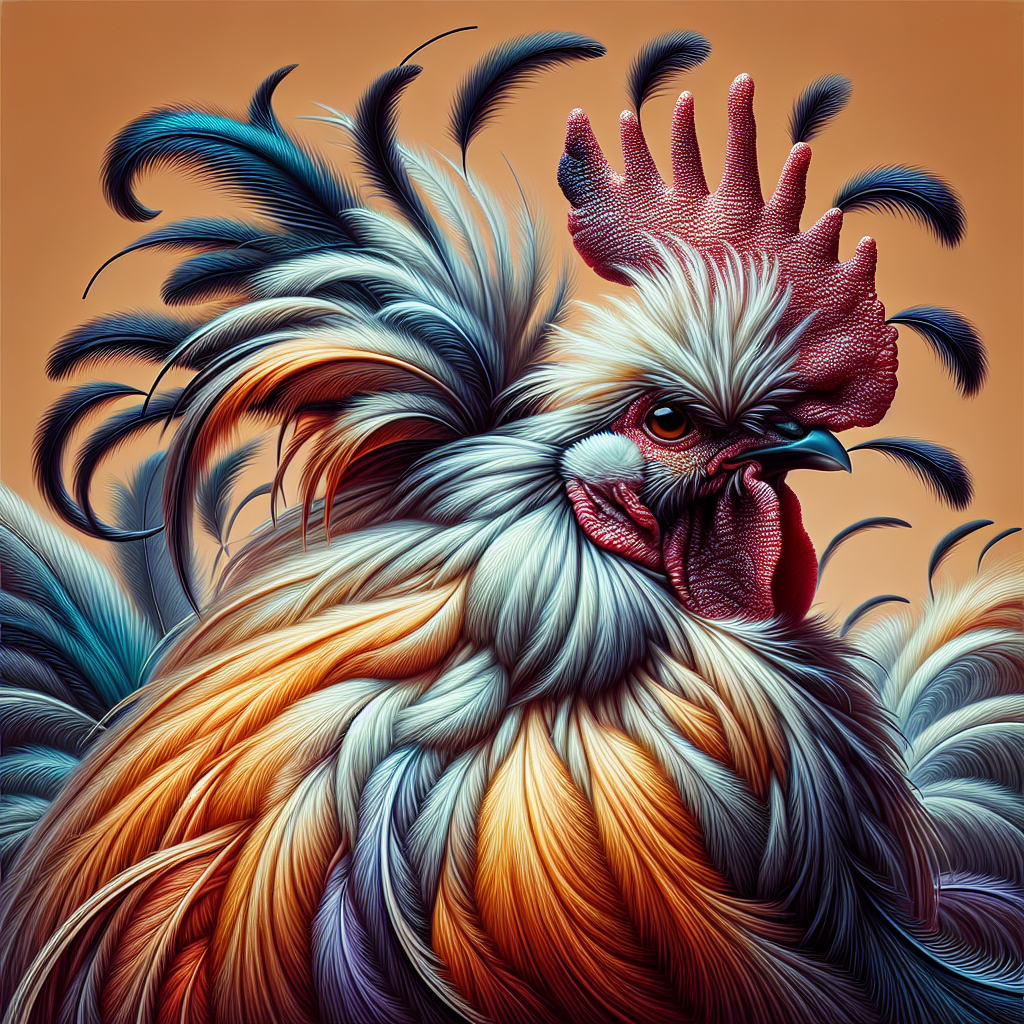If you’ve ever wondered whether certain chicken breeds have a knack for foraging, look no further. In this article, we’ll explore the fascinating world of chicken breeds and their innate abilities as foragers. Discover the breeds that excel at finding their own food in the wild, their unique characteristics, and why they can be a great addition to your backyard flock. So, whether you’re a seasoned chicken enthusiast or just starting out, get ready to dive into the world of chicken breeds and their foraging prowess.
What is foraging?
Definition
Foraging refers to the natural behavior of chickens to search and obtain their own food by scavenging through vegetation, soil, and other materials in their surroundings. It is an essential instinct embedded in the genetic makeup of chickens. By foraging, chickens are able to find a variety of plants, insects, seeds, and even small animals that contribute to their overall nutrition and well-being.
Importance for chickens
Foraging plays a crucial role in the physical and mental health of chickens. It allows them to fulfill their instinctual need for exploration and engagement with their environment. In addition to providing a source of sustenance, foraging helps chickens maintain a balanced diet by allowing them to consume a diverse range of foods. It also promotes exercise, as chickens actively move around while foraging.
Benefits of foraging for chickens
The benefits of foraging for chickens are numerous. By engaging in this natural behavior, chickens:
- Obtain essential nutrients from diverse food sources, leading to a well-rounded diet
- Avoid boredom and alleviate stress by staying physically active and mentally stimulated
- Enhance their immune system through exposure to beneficial microorganisms found in soil and natural environment
- Maintain strong beaks and claws by engaging in natural wear and tear while pecking and scratching
- Exhibit more natural behavior, leading to happier and healthier chickens overall.
Factors that affect foraging ability
Natural instincts
Chickens have inherent foraging instincts that vary between different breeds. Some chickens possess a stronger desire and ability to forage, while others may rely more on supplemental feeding. These instincts are influenced by their genetic makeup and can help determine how well a chicken will adapt to foraging in its environment.
Breed characteristics
The breed of a chicken also plays a significant role in its foraging ability. Certain breeds have been selectively bred over time to exhibit stronger foraging instincts compared to others. These breeds are often more independent, better suited to free-ranging, and have a natural inclination to actively search for food.
Environmental factors
The environment in which chickens are raised greatly impacts their foraging ability. Availability of natural food sources, such as edible plants, insects, and other small organisms, can influence a chicken’s success in finding food. Factors like climate, geography, and the presence of predators also affect a chicken’s willingness and opportunity to forage.
Popular chicken breeds known for their foraging abilities
Rhode Island Red
Originating in Rhode Island, the Rhode Island Red is a popular breed known for its exceptional foraging skills. Developed in the late 19th century, this breed was initially bred for both meat and egg production. Rhode Island Reds are hardy, intelligent, and have a strong instinct to actively seek out their own food.
Australorp
Hailing from Australia, the Australorp breed is highly regarded for its exceptional egg-laying abilities and strong foraging skills. Bred from Orpington chickens, Australorps are known to be self-sufficient foragers, requiring minimal supplemental feeding.
Dominique
Having a long history in the United States, the Dominique breed has proven to be an excellent forager. This breed is hardy, adaptable, and manages to thrive in various environments. Known for their active and curious nature, Dominiques are able to successfully find food while freely ranging.
Sussex
Originally from the Sussex region of England, Sussex chickens are renowned for their robust foraging skills. They possess a gentle and docile disposition, making them excellent for free-ranging while actively seeking out food sources. Sussex chickens are also known for their ability to lay a moderate number of eggs.
Welsummer
The Welsummer breed originates from the Welsum region in the Netherlands. These chickens are excellent foragers, known for their ability to navigate their surroundings in search of food. Welsummers are also prized for their distinctive dark brown eggs, making them a desirable breed for both their foraging skills and egg production.
Rhode Island Red
Origin and history
The Rhode Island Red breed was developed in the late 19th century in the state of Rhode Island, United States. It was created by crossing various chicken breeds, including the Red Malay and Eurasian hens, with the aim of developing a versatile and productive bird.
Characteristics
Rhode Island Reds are medium-sized chickens characterized by their rich, mahogany-colored feathers. They have strong, muscular bodies and a confident appearance. Known for their hardiness, they fare well in a variety of climates and adapt easily to different environments.
Foraging ability
Rhode Island Reds are exceptional foragers and possess a strong instinct to actively search for food. They are known to utilize their keen sense of sight and hearing to locate edible plants, insects, and other small organisms. Their foraging ability coupled with their natural inclination to roam makes them highly independent and efficient at finding their own sustenance.
Other notable traits
Apart from their exceptional foraging skills, Rhode Island Reds are also valued for their productivity. They are known for laying large brown eggs consistently throughout the year, making them a popular choice for backyard chicken enthusiasts and egg production farms alike. Additionally, Rhode Island Reds tend to be calm and friendly, making them excellent additions to a family flock.
Australorp
Origin and history
Australorps were developed in Australia during the early 20th century. The breed was created by crossing various Black Orpington chickens with other breeds, including Rhode Island Reds and White Leghorns, to enhance their egg production capabilities.
Characteristics
Australorps are medium to large-sized chickens with glossy black feathers and a distinctive beetle-green sheen. They have a well-rounded, muscular body and a medium-sized comb. Known for their friendly and docile nature, Australorps are popular choices for both backyard enthusiasts and exhibition purposes.
Foraging ability
Australorps are excellent foragers and rely less on supplemental feeding compared to some other breeds. They possess a strong instinct to seek out their own food, utilizing their sharp eyes and foraging skills to find insects, seeds, and vegetation. Their natural inclination to roam and explore their environment enables them to excel in finding sustenance through foraging.
Other notable traits
In addition to their exceptional foraging abilities, Australorps are renowned for their exceptional egg-laying capabilities. They are known to consistently produce large brown eggs, often setting records in egg-laying competitions. Their calm and friendly disposition also makes them popular choices for those seeking a pet-friendly breed.
Dominique
Origin and history
The Dominique breed, also commonly known as Dominicker or Pilgrim Fowl, has a long and storied history in the United States. It is believed to be one of the oldest chicken breeds in America, with its origins dating back to the early European settlers. Dominiques were widely kept on farms for their versatility, including their foraging ability.
Characteristics
Dominiques are medium-sized chickens with distinctive black and white barred feathers. They have a robust and well-muscled build, with a rose comb atop their head. Known for their hardiness and adaptability, Dominiques are able to thrive in various climates and environments.
Foraging ability
Dominiques possess excellent foraging ability, which stems from their strong natural instincts. They are curious, active, and intelligent chickens that actively seek out food sources in their surroundings. Their ability to forage effectively contributes to their self-sufficiency and makes them well-suited to free-ranging and exploring new environments.
Other notable traits
Aside from their exceptional foraging skills, Dominiques are known for their resilience and ability to endure different conditions. They have a moderate egg-laying capacity, often producing light brown eggs. Dominiques also tend to be calm and friendly, making them easy to handle and suitable for a variety of flock settings.
Sussex
Origin and history
Sussex chickens have their origins in the Sussex region of England. They have a long history that dates back to the early 19th century. Originally bred for meat and egg production, Sussex chickens have become popular for their adaptability, including their strong foraging abilities.
Characteristics
Sussex chickens come in various colors, with the most common being white, red, and speckled. They have a medium to large build with fairly long legs and a compact body. Known for their gentle and docile nature, Sussex chickens are often favored for their calm and easily manageable temperament.
Foraging ability
Sussex chickens possess exceptional foraging abilities. With a strong drive to explore and search for food, they actively engage in pecking and scratching to uncover insects, worms, and other edible resources. Their adaptability to different environments and their natural inclination to forage make them successful in finding their own sustenance.
Other notable traits
In addition to their remarkable foraging abilities, Sussex chickens are known for their dual-purpose qualities. They offer both moderate egg production and a decent meat yield, making them a popular choice among backyard chicken keepers. Sussex chickens are also relatively low-maintenance and adaptable, thriving in a range of environments.
Welsummer
Origin and history
The Welsummer breed originates from the Welsum region in the Netherlands. It was developed during the early 20th century, aiming to create a chicken that excelled in both egg production and foraging ability. Welsummers have since gained popularity for their distinct appearance and useful characteristics.
Characteristics
Welsummers are medium-sized chickens with a distinctive rusty-red color and intricate black feather patterning. They have a sturdy and well-built frame with a medium-sized comb. Welsummers are particularly noted for their deep, dark brown eggs, which contribute to their appeal as both an egg-laying breed and a visually striking addition to any flock.
Foraging ability
Welsummers possess excellent foraging abilities and actively seek out food sources in their surroundings. With a strong instinct for exploration and a keen eye for edible plants, insects, and other food sources, they effectively forage to supplement their diet. Their natural disposition to range freely and their desire to actively search for food make them highly adept at foraging.
Other notable traits
Apart from their exceptional foraging abilities, Welsummers are well-regarded for their reliability in egg production. They consistently lay dark brown eggs, which are highly sought after by many chicken keepers. With their friendly and curious nature, Welsummers also make for engaging and enjoyable pets.
Other factors to consider for successful foraging
Free-range vs. confined space
The availability of free-ranging space greatly impacts a chicken’s ability to forage. Providing ample room for chickens to explore and search for food is essential for supporting their natural foraging instincts. However, even in confined spaces, owners can create opportunities for chickens to forage by incorporating enrichments such as scratching areas, forage boxes, or scattering food throughout their living space.
Supplemental feeds
While foraging is a natural and instinctive behavior, it is important to note that chickens may require supplemental feeds to ensure they receive a well-balanced diet. Depending solely on foraging may not always provide all the necessary nutrients, especially during times when natural food sources are scarce. Providing a balanced chicken feed alongside a foraging-friendly environment can help support optimal nutrition.
Natural habitat creation
Creating a natural habitat that mimics a chicken’s natural environment can significantly enhance their foraging experience. Planting a variety of edible plants and incorporating different habitats such as grassy areas, shrubs, and trees encourages chickens to actively search for food. Additionally, providing logs, rocks, or other natural features can create opportunities for chickens to engage in natural behaviors like scratching and pecking, further enhancing their foraging abilities.
Conclusion
Foraging is an integral aspect of a chicken’s natural behavior and plays a vital role in their overall health and well-being. By allowing chickens opportunities to engage in this instinctive behavior, owners can witness numerous benefits, such as improved nutrition, physical activity, mental stimulation, and reduced stress levels. Whether it’s the Rhode Island Red, Australorp, Dominique, Sussex, or Welsummer, each of these popular chicken breeds offers unique foraging abilities that can bring joy and fulfillment to both the chickens and their owners. By understanding the factors that influence foraging ability, providing the right environment, and considering supplemental feeding, chicken keepers can support and enhance their flock’s innate foraging instincts, promoting a happier and healthier flock overall.




